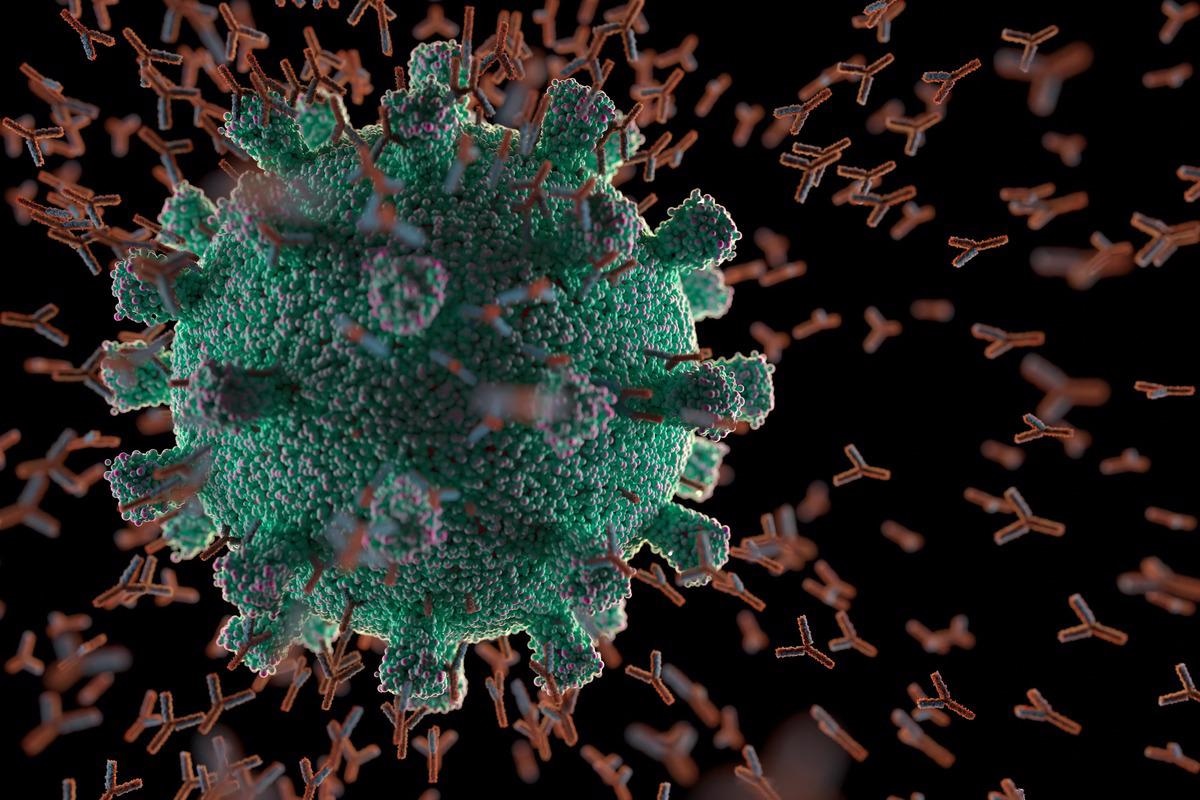Neutralizing antibody response against SARS-CoV-2 variants in health care workers pre- and post-vaccination
Numerous vaccines against severe acute respiratory syndrome coronavirus 2 (SARS-CoV-2) have been developed, including two novel mRNA vaccines, Moderna mRNA-1273 and Pfizer/BioNTech BNT162b2. Coronavirus disease 2019 (COVID-19) hospitalizations and deaths have been reduced thanks to these highly effective immunizations.
 Study: Loss of Neutralizing Antibody Response to mRNA Vaccination against SARS-CoV-2 Variants: Differing Kinetics and Strong Boosting by Breakthrough Infection. Image Credit: ktsdesign/Shutterstock
Study: Loss of Neutralizing Antibody Response to mRNA Vaccination against SARS-CoV-2 Variants: Differing Kinetics and Strong Boosting by Breakthrough Infection. Image Credit: ktsdesign/Shutterstock
However, several SARS-CoV-2 variants of concern (VOCs) have evolved and threatened the current effectiveness of vaccines. Alpha (B.1.1.7) is distinguished by N-terminal domain (NTD) deletions and a critical N501Y mutation in its receptor-binding domain (RBD). Alpha had high transmissibility and spread quickly from Europe to the rest of the world.
Beta (B.1.351), another VOC that emerged around the same time, is distinguished by other NTD mutations and deletions, as well as key RBD mutations such as K417N, E484K, and N501Y. While the Beta variant did not spread as widely as the Alpha variant, it was resistant to 66 vaccine-induced immunity.
Finally, Delta (B.1.617.2) is responsible for the most recent COVID-19 pandemic wave and is distinguished by new NTD alterations as well as key RBD mutations (L452R and T478K). Delta has resulted in an alarming number of vaccine-breakthrough infections worldwide, sparking debate about the need for vaccine booster doses.
To address these concerns, Ohio State University researchers used serum collected before vaccination, one month after the first dose of BNT162b2 or mRNA-1273, and one and six months after the second dose of vaccine to examine neutralizing antibody (nAb) levels in 48 vaccinated health care workers (HCWs) against the major SARS-CoV-2 variants. Prior research has found that neutralizing antibody levels are a significant predictor of protection against SARS-CoV-2 infection.
A preprint version of the study is available on the bioRxiv* server while the article undergoes peer review.
The study
The authors compared the nAb titer strength over time to all four variants studied. Despite the large diversity in nAb titers of these people, notably against D614G, a robust nAb response was induced among HCWs following the first dose of mRNA vaccine compared to pre-vaccination across all variations, which efficiently inhibited virus entry.
However, following the first dose of vaccination, between 14.6 percent and 45.8% of HCWs had neutralization titers (NT50) below the detection limit across all types. Following a second vaccine dose, these initial nAb titers declined to 0.0 percent to 4.2 percent for all variations, with a 2-3-fold rise in mean nAb titers compared to the first dose. Notably, four HCWs with higher nAb titers after the first vaccine dosage did not demonstrate an increase after the second dose but rather a plateau or modest reduction.
One of the four people tested positive for anti-SARS-CoV-2-N before vaccination. The other three tested positive for anti-N after receiving their first vaccine dose, indicating infection before or shortly after immunization.
When compared to D614G, the Alpha, Beta, and Delta VOCs had 1.3-, 3.2-, and 2.2-fold lower NT50 values after two vaccine doses, respectively. There was a 3.5-10.7-fold reduction in nAb levels against all variants evaluated six months after vaccination, with 37.5 % to 56.3 % of HCWs having NT50 levels below the limit of detection. Although the differences in these low nAb titer groups were not statistically significant, the mean NT50 values for Alpha, Beta, and Delta variants at six months were 1.3-, 1.7-, and 3.6-fold lower than D614G, respectively.
The presence of COVID-19 before immunization is an important factor in determining the nAb response to vaccination. One HCW was anti-SARS-CoV-2 N positive by ELISA before vaccination. Four were anti-N positive at their post-first vaccine dose sample, three at their post-second vaccine dose sample, and four at their six-month vaccine sample, indicating that these 12 subjects were infected with SARS-CoV-2 at various stages of vaccination.
At pre-vaccination sample collection, D614G was the most common circulating SARS-CoV-2 variation, while D614G and Alpha were circulating post-first and second doses, and Delta was the dominating strain at six months. Not all patients remained anti-N positive, although they were all considered infected for the study. Anti-N positive HCWs had an 11.7-fold higher mean NT50 against all four viruses after the first vaccine dose than anti-N negative HCWs. Following a second vaccine dosage, the disparity was reduced to 2.3-fold.
Implications
The authors discovered that all three VOCs had lower NT50 values than D614G at all periods in this analysis, with Beta displaying the strongest nAb resistance, followed by Delta. These findings are in line with preliminary studies from this group and others. However, for samples obtained six months after immunization, the Delta version displayed equivalent or even stronger resistance to nAbs than the Beta form. The reason for the Beta variant's more modest decline in NT50 levels at six months was unclear. However, it was most likely due to this variant's pre-existing significant resistance to neutralization after the second immunization dose.
*Important notice
bioRxiv publishes preliminary scientific reports that are not peer-reviewed and, therefore, should not be regarded as conclusive, guide clinical practice/health-related behavior, or treated as established information.
-
Evans, J. et al. (2021) "Loss of Neutralizing Antibody Response to mRNA Vaccination against SARS-CoV-2 Variants: Differing Kinetics and Strong Boosting by Breakthrough Infection". bioRxiv. doi: 10.1101/2021.12.06.471455. https://www.biorxiv.org/content/10.1101/2021.12.06.471455v1
Posted in: Medical Science News | Medical Research News | Disease/Infection News
Tags: Antibody, Coronavirus, Coronavirus Disease COVID-19, Health Care, immunity, Immunization, Mutation, Pandemic, Receptor, Research, Respiratory, SARS, SARS-CoV-2, Severe Acute Respiratory, Severe Acute Respiratory Syndrome, Syndrome, Vaccine, Virus
.jpg)
Written by
Colin Lightfoot
Colin graduated from the University of Chester with a B.Sc. in Biomedical Science in 2020. Since completing his undergraduate degree, he worked for NHS England as an Associate Practitioner, responsible for testing inpatients for COVID-19 on admission.
Source: Read Full Article


